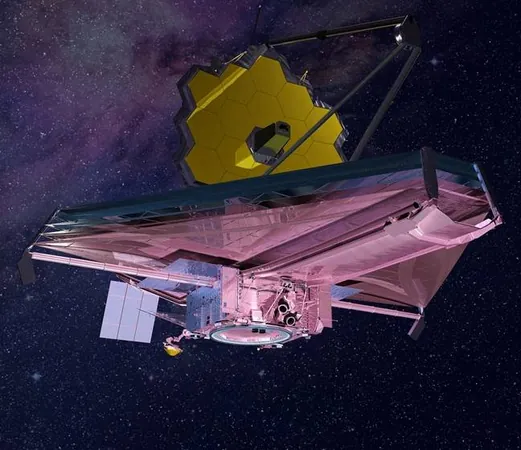
Unlocking the Universe: 1.5 TB of James Webb Space Telescope Data Released
2025-06-09
Author: Arjun
A Cosmic Treasure Trove Unveiled
Get ready, space enthusiasts! In a groundbreaking move, a NASA-supported initiative has just released a staggering 1.5 terabytes of data derived from the James Webb Space Telescope (JWST), marking an unprecedented opportunity to explore the depths of our universe like never before.
COSMOS Project: Bridging the Gaps in Astrophysics
The Cosmic Evolution Survey (COSMOS), a collaborative effort between the University of California, Santa Barbara, and the Rochester Institute of Technology, has launched an impressive searchable dataset that opens a treasure chest for budding astrophysicists across the globe.
Explore Galaxies Like Never Before!
This extensive dataset not only features a comprehensive catalog of galaxies but also includes an interactive viewer. Users can search for specific celestial objects or click on them to access detailed properties, covering an expansive area of the sky using the Near Infrared Camera (NIRCam) and the Mid Infrared Instrument (MIRI). This means aspiring astronomers now have the chance to examine the mysteries of 0.54 square degrees and 0.2 square degrees of sky, respectively.
Turning Raw Data into Usable Science
While this raw data was accessible to the scientific community before, the COSMOS-Web project aims to transform it into a more user-friendly format. According to Jeyhan Kartaltepe, the lead researcher from Rochester Institute of Technology, processing the data involves meticulous calibration to eliminate various artifacts, such as unwanted light interference from bright stars. This results in images that are pristine and scientifically useful.
A Unique Approach to Cosmic Observations
COSMOS-Web is one of about 100 projects per year utilizing the $10 billion JWST time. Its goal? To observe extremely distant galaxies within a vast expanse of the sky, striking a balance between depth of observation and breadth of coverage—a feat that offers invaluable insights into cosmic structures.
Understanding the Early Universe
One of the fascinating aspects of this project is its focus on redshift—where light from receding galaxies shifts to longer wavelengths. This allows scientists to glimpse these distant galaxies as they appeared in the early universe, aiding our understanding of cosmic expansion.
A Global Collaboration to Unlock Cosmic Secrets
Leveraging advanced technology, including the French supercomputer CANDIDE, the COSMOS project combines numerous images into a single mosaic, making this incredible data set accessible. When the project commenced in 2007, its aim was to decode a pivotal transformation in the early universe about 200 million years post-Big Bang, transitioning from opaque neutral hydrogen to clear ionized gas.
A Call to Scientists Everywhere!
Kartaltepe encourages scientists worldwide to engage with this rich dataset, stating that the involvement of a broader community will unlock even more groundbreaking astronomical discoveries.
The Future of Cosmic Exploration Looks Bright
While NASA has funded COSMOS through its Space Telescope Science Institute, the search for additional funding continues, particularly from European sources. The journey to unravel the universe's secrets is just beginning—join in on this cosmic adventure!


 Brasil (PT)
Brasil (PT)
 Canada (EN)
Canada (EN)
 Chile (ES)
Chile (ES)
 Česko (CS)
Česko (CS)
 대한민국 (KO)
대한민국 (KO)
 España (ES)
España (ES)
 France (FR)
France (FR)
 Hong Kong (EN)
Hong Kong (EN)
 Italia (IT)
Italia (IT)
 日本 (JA)
日本 (JA)
 Magyarország (HU)
Magyarország (HU)
 Norge (NO)
Norge (NO)
 Polska (PL)
Polska (PL)
 Schweiz (DE)
Schweiz (DE)
 Singapore (EN)
Singapore (EN)
 Sverige (SV)
Sverige (SV)
 Suomi (FI)
Suomi (FI)
 Türkiye (TR)
Türkiye (TR)
 الإمارات العربية المتحدة (AR)
الإمارات العربية المتحدة (AR)